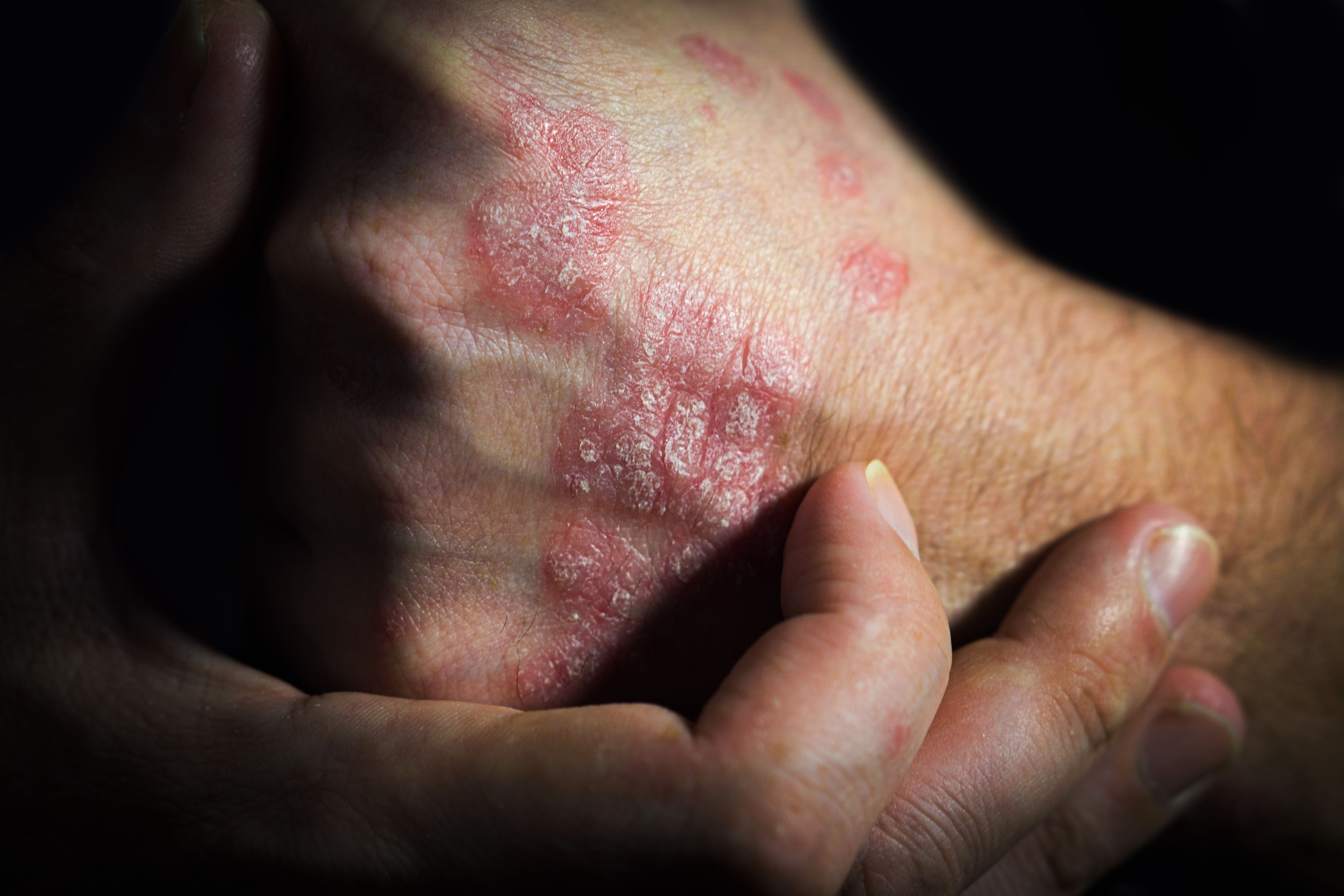- Case-Based Roundtable
- General Dermatology
- Eczema
- Chronic Hand Eczema
- Alopecia
- Aesthetics
- Vitiligo
- COVID-19
- Actinic Keratosis
- Precision Medicine and Biologics
- Rare Disease
- Wound Care
- Rosacea
- Psoriasis
- Psoriatic Arthritis
- Atopic Dermatitis
- Melasma
- NP and PA
- Skin Cancer
- Hidradenitis Suppurativa
- Drug Watch
- Pigmentary Disorders
- Acne
- Pediatric Dermatology
- Practice Management
- Prurigo Nodularis
- Buy-and-Bill
Article
IncRNA Combination Promotes Psoriasis Formation
Author(s):
New research into the disease’s pathogenesis may inform future treatment options.
A combination of IncRNA not only regulates specific gene expression but also contributes to and promotes the formation of psoriasis.
SergeVo/AdobeStock

In a recent study,1 researchers sought to investigate and identify the primary mechanism associated with IncRNA bladder cancer-associated transcript 1 (BLACAT1) and the role it plays in the pathogenesis of psoriasis, citing the association of BLACAT1 with cellular hyperproliferation.
Researchers collected both normal skin tissues and skin tissues containing psoriasis lesions from volunteers and patients with psoriasis. All volunteers and patients had been affiliated with Nanfang Hospital in Guangzhou, China, from 2020 to 2021.
They then conducted cell cultures utilizing human immortalized keratinocytes (HaCaT) and adult normal human epidermal keratinocytes (NHEKs), which were both cultured in a medium containing 10% fetal bovine serum and 1% penicillin/streptomycin. After a controlled incubation period, all cells were treated for 24 hours with either phosphate buffered saline or rhIL-22.
Researchers also conducted cell transfection after acquiring small interfering RNA (siRNA) and non-targeting siRNA. Interfering siRNAs targeted genes AKT1 and BLACAT1. They also conducted cell transfection on miR-149-5p mimics, inhibitors, and matched negative controls. Afterward, all RNAs underwent isolation and reverse transcription to become cDNAs.
Additionally, researchers conducted western blot testing, a cell-counting kit-8 assay, apoptosis assay, dual-luciferase reporter assay, AGO2-RNA binding protein immunoprecipitation (RIP), protein extraction and digestion and tandem mass tags (TMT) labeling, liquid chromatography-mass spectrometry/mass spectrometry analysis and protein identification, and a bioinformatics analysis.
After the completion of these steps, researchers also conducted an in vivo experiment on mice, wherein 62.5 mg of a 5% imiquimod solution was smeared on the skin of the mice. 200ul BLACAT1 lentiviral vector and associate none control were administered intradermally 3 times before researchers assessed clinical manifestations. Toward the conclusion of the research, investigators performed a histopathologic examination using hematoxylin eosin-stained slides to evaluate epidermal thickness.
As a result of the study, researchers found that in the in vivo mice experiment, BLACAT1 both aggravated the clinical manifestation of psoriasis and was upregulated in psoriasis.
Furthermore, their research found that BLACAT1 used gene AKT1 and protein mTOR as a means to promote the proliferation of keratinocytes. It also demonstrated a capability toact as an miR-149-5p sponge, based on downregulation in cases of miR-149-5p overexpression and upregulation in cases of miR-149-5p underexpression when compared to a negative control.
Other findings included the determination of AKT1, a target gene of miR-149-5p, influencing the proliferation of keratinocytes and the ability of BLACAT1 to promote keratinocyte proliferation via miR-149−5p/AKT1/mTOR axis.
“This study revealed that BLACAT1 is a psoriasis-associated lncRNA and acts as a miR-149-5p sponge to promote psoriasis progression via the AKT1/mTOR pathway, which indicates that BLACAT1 is a promising target for psoriasis treatment,” study authors wrote. “This research elucidated the pathogenesis of psoriasis and provided a new direction for treating psoriasis.”
Reference
- Hua X, Li J, Shang M, et al. Pathogenesis of psoriasis via mir‐149‐5p/akt1axis by long noncoding RNA BLACAT1. Skin Res Technol. 2023;29(5). doi:10.1111/srt.13339





